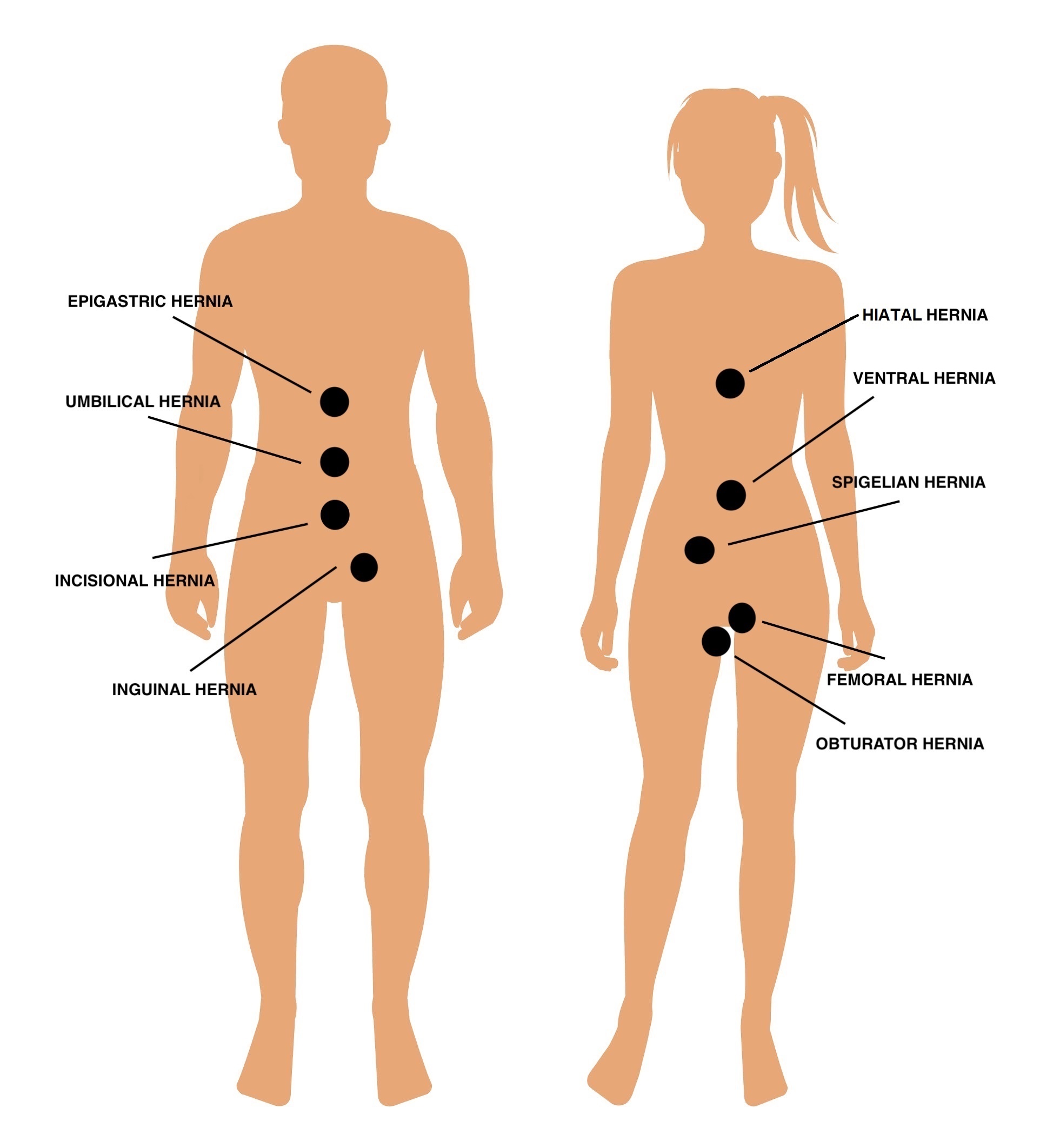Hernia Surgery in Sydney
A hernia is a weakness or defect in the abdominal muscle wall through which part of the abdominal content protrudes (out-pouching) causing a bulge.
A hernia is a weakness or defect in the abdominal muscle wall through which part of the abdominal content protrudes (out-pouching) causing a bulge.
The hernia sac (bulge) is formed by extension of the lining of the abdominal cavity (peritoneum) and may contain part of the small or large intestine. A hernia can be present at birth (congenital), but most of the time appears later in life (acquired). It is generally reducible; in this case the bulge appears intermittently and disappears easily when laying-down.
Acquired hernias may develop as a result of increased pressure within the abdominal cavity, for instance during pregnancy, heavy lifting, obesity, constipation, or chronic cough. Poor nutrition, smoking and past family history of hernia repair are also known predisposing factors.
Abdominal wall hernia can cause symptoms including abdominal pain exacerbated with coughing or exercising, abdominal distension, burning, gurgling or dragging sensation, nausea and vomiting.
Those symptoms are often more pronounced when the hernia becomes non-reducible (incarcerated), prompting the patient to present to the hospital on emergency. On few occasions, intestine can be involved causing bowel obstruction due to strangulation. In this situation urgent hernia surgery is mandatory as any delay can lead to death of the bowel wall due to compromised blood supply, and be potentially life threatening.
Hernia can occur anywhere in the abdomen, but most commonly at weak anatomical points, mainly inguinal (groin) and umbilical (navel).

Note: all types of hernias occur on both males and females. Display is to show general locations only
Any patient fit for surgery and with a symptomatic (pain, discomfort) hernia.
Patients with an asymptomatic hernia that is increasing in size.
Patients with an asymptomatic hernia who plan to travel abroad.
Patients with an incarcerated and/or strangulated hernia will require urgent repair.
(Warning: gallery contain graphic imagery of surgical procedures in progress)

MB, MD, PhD, FMH, FRACS
Prof Chris Berney completed his medical and surgical training in Switzerland before coming to Australia over 25+ years ago. He has dedicated his professional career to the research and development of many pioneering laparoscopic procedures, such as the use of mesh in hernia surgery, and now has one of the largest series of patients of any surgeons in Australia for this specific approach to hernia repair.
He consults in Hurstville and Bankstown and treats both Private and Public patients.
Learn more here.
If you would like to book an appointment for a consultation or procedure please call us or use our online booking form